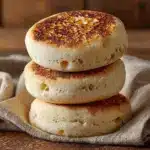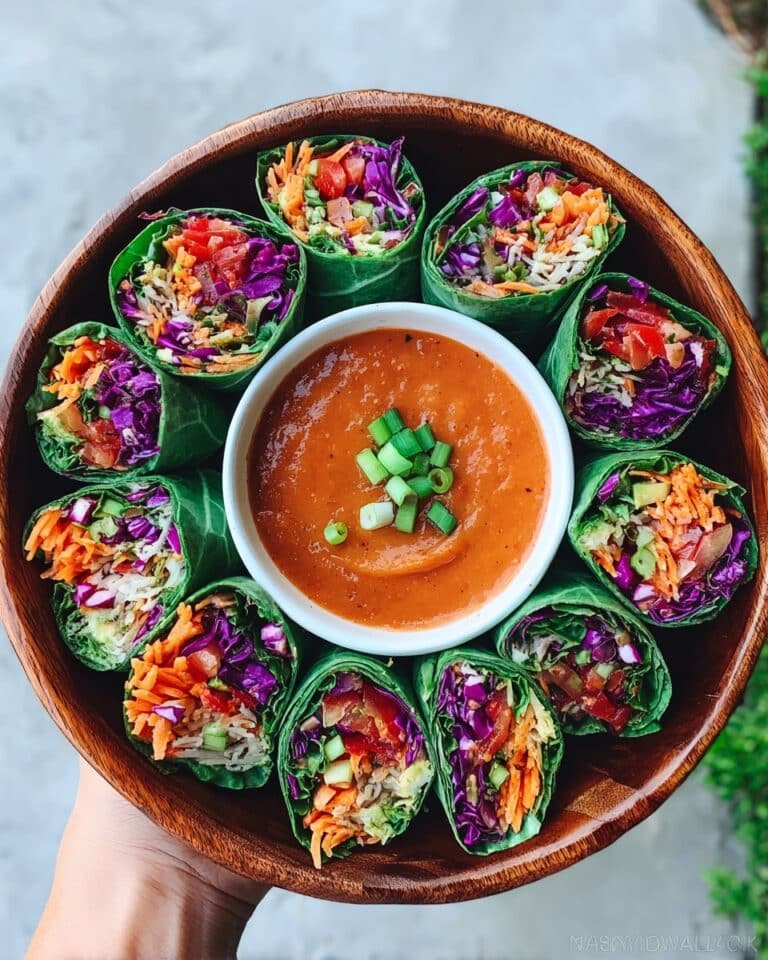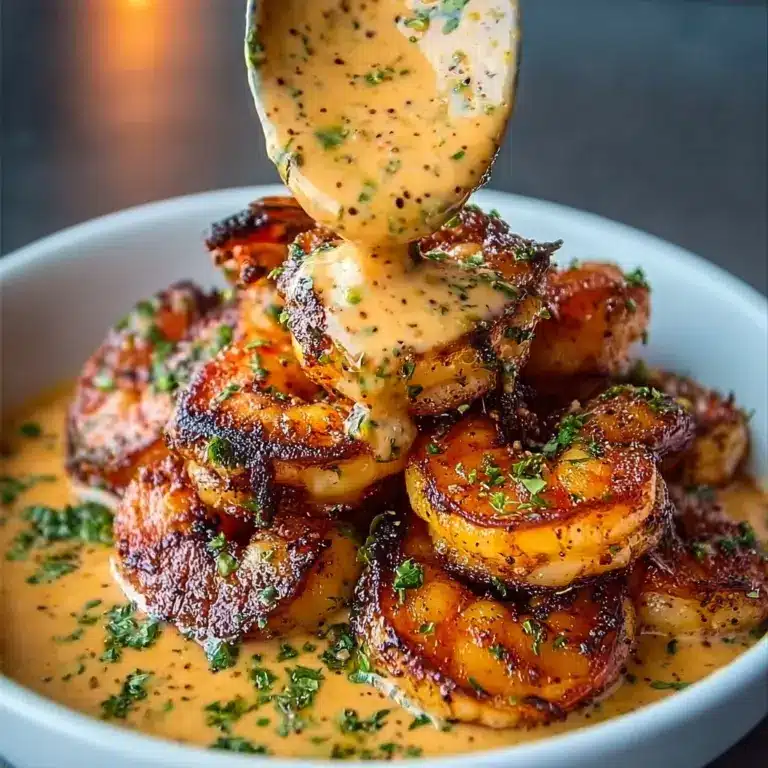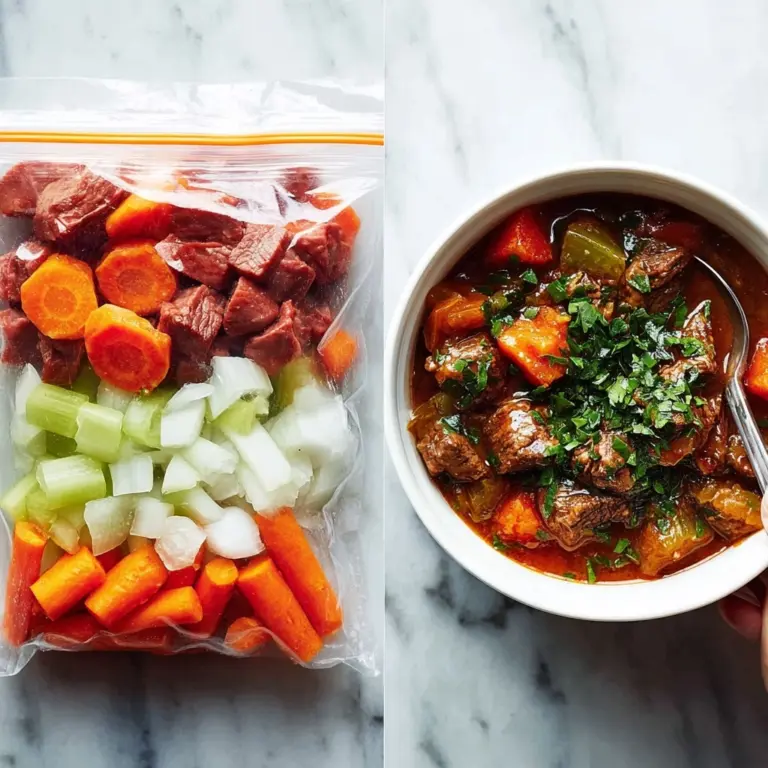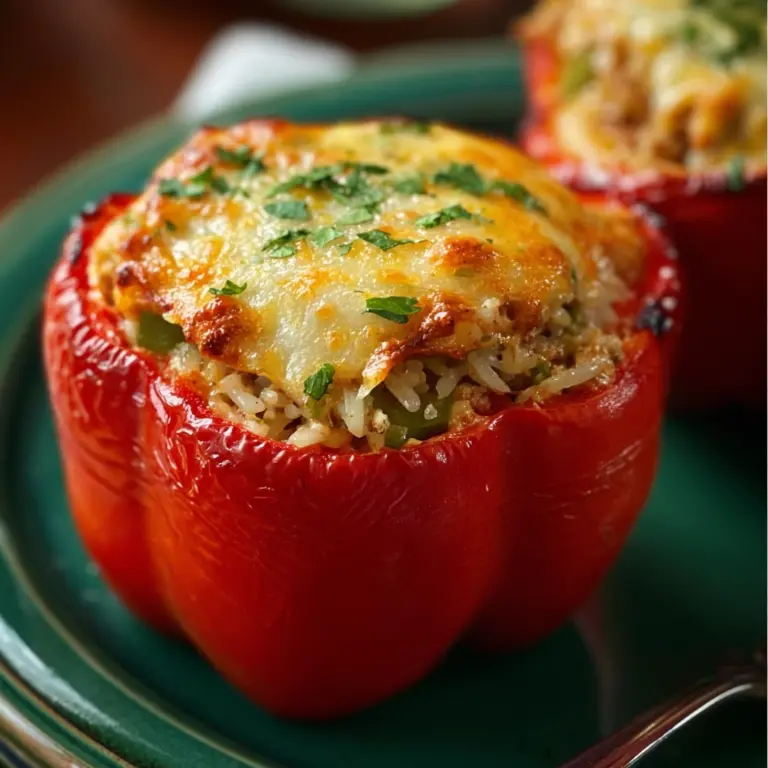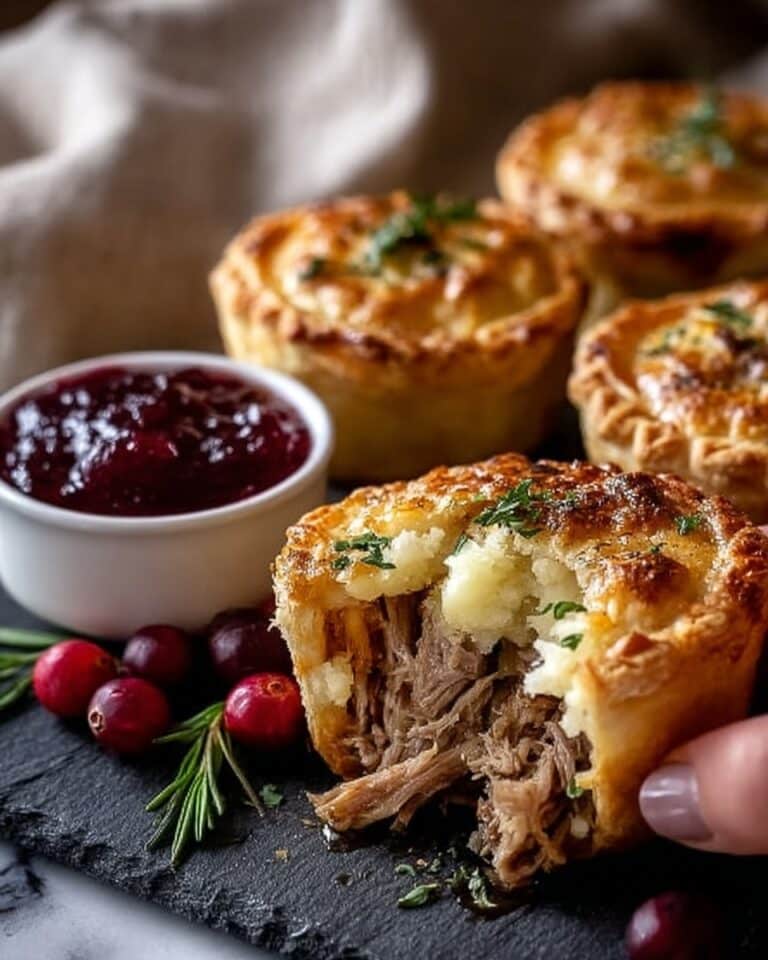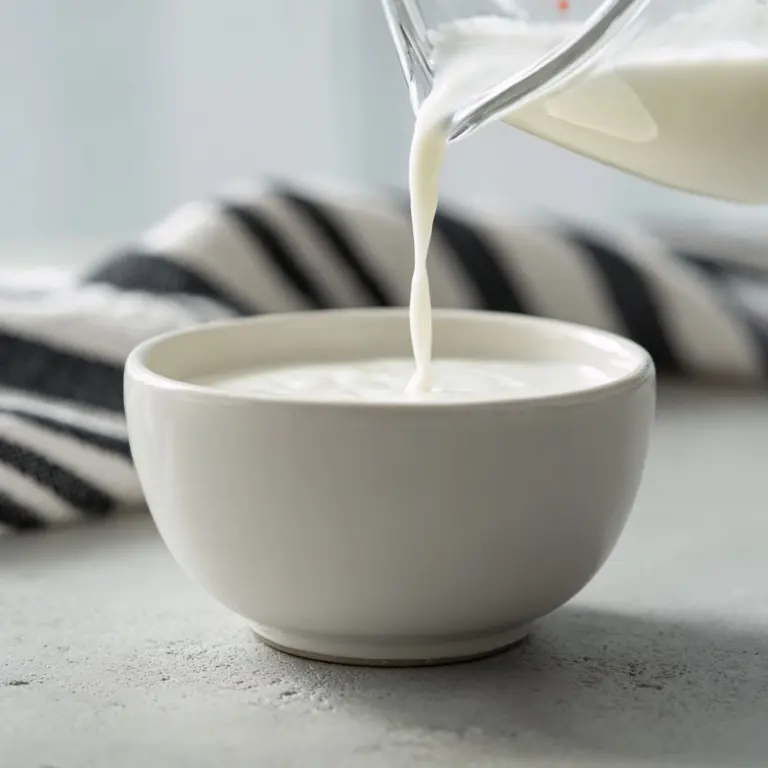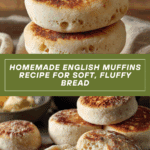Traditional English Muffins Recipe
If you’ve ever savored the delightful nooks and crannies of a perfectly toasted bread, then you already know how magical Traditional English Muffins can be. These little golden rounds are wonderfully soft on the inside yet slightly crisp on the outside, offering a warm, comforting bite that’s perfect for breakfast or tea time. Making Traditional English Muffins at home is surprisingly straightforward, and once you try this recipe, you’ll never want store-bought again. Their slightly tangy flavor and unique texture come from a simple combination of ingredients that work together to create a timeless classic.
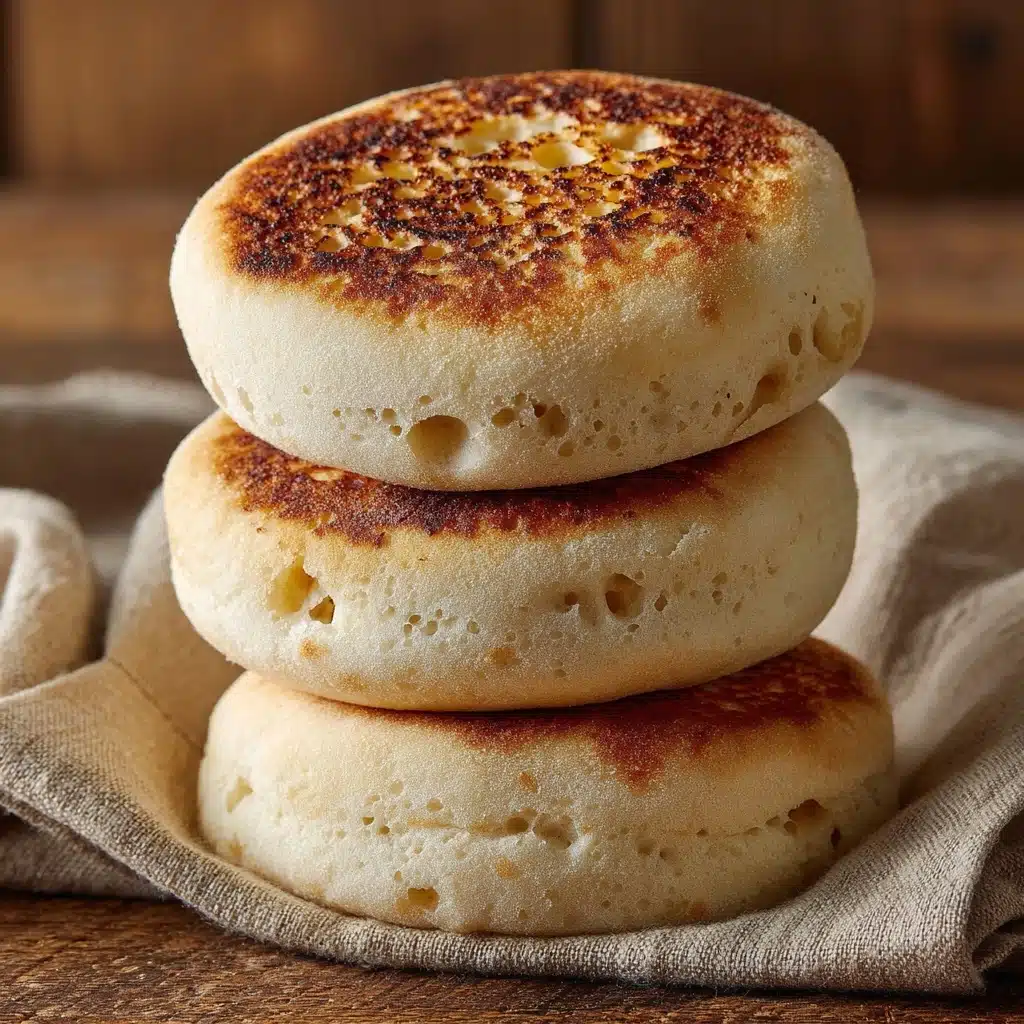
Ingredients You’ll Need
Each ingredient in this Traditional English Muffins recipe plays a vital role in delivering the perfect texture and taste, from the fluffy crumb to the crunchy crust. The simplicity of these essentials makes it approachable and rewarding for every home baker.
- All-purpose flour: Provides the structure and chewiness that are signature to English muffins.
- Salt: Enhances the natural flavors and balances the sweetness.
- Sugar: Feeds the yeast and adds a subtle hint of sweetness.
- Dry yeast: The magical ingredient that makes the muffins rise and gives a slight tang.
- Warm milk: Activates the yeast and adds richness to the dough.
- Butter, melted: Contributes to a tender crumb and adds a delicate buttery flavor.
- Cornmeal: Dusts the muffins for that rustic texture and crisp exterior every Traditional English Muffin should have.
How to Make Traditional English Muffins
Step 1: Combine Dry Ingredients
Begin by mixing the all-purpose flour, salt, sugar, and dry yeast in a large bowl. This step ensures even distribution of the yeast and seasoning, setting the foundation for a well-risen, flavorful dough.
Step 2: Add the Wet Ingredients and Form the Dough
Warm milk and melted butter are added to the dry mixture. Stir everything gently until a soft dough forms—a perfect balance between wet and dry. This mix is your blank canvas before the magic of fermentation.
Step 3: First Rise
Cover your bowl with a damp cloth and let the dough rest in a warm spot. In about an hour, it will double in size, transforming into a puffy, airy mass ready for the next step. This rest is essential to develop the flavor and lightness traditional to authentic English muffins.
Step 4: Shape the Muffins
Punch down the risen dough to release excess air, then roll it out to about half an inch thick on a floured surface. Using a round cutter, cut out your muffin shapes. Don’t forget to dust each piece generously with cornmeal—this not only prevents sticking but also creates the signature crusty bottom and sprinkle-like texture.
Step 5: Second Rise
Place your shaped muffins on a baking sheet, cover lightly, and allow them to rise for another 30 minutes. This second fermentation gives your muffins that delightful airy texture and is key to achieving those classic nooks and crannies.
Step 6: Cook to Golden Perfection
Heat a skillet over medium-low heat and gently cook each muffin for about 5 to 6 minutes per side. This slow, careful cooking ensures a beautifully browned exterior while cooking the dough through without drying it out. The result is a batch of Traditional English Muffins that are crispy outside and tender inside.
How to Serve Traditional English Muffins
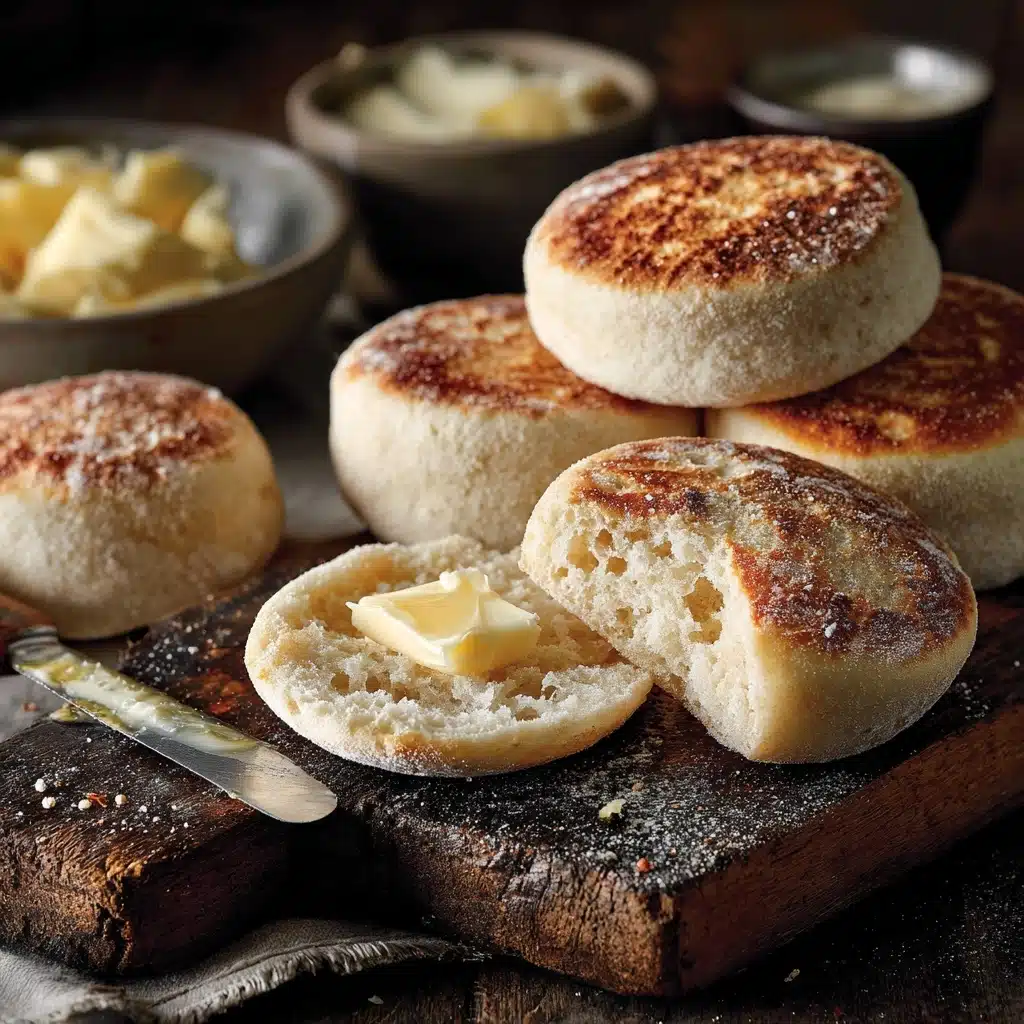
Garnishes
Traditional English Muffins are incredibly versatile and pair beautifully with classic toppings like butter and jam or honey. For something savory, a spread of cream cheese or a slice of sharp cheddar transforms them into a hearty treat. Their nooks and crannies grab onto melted butter or marmalade perfectly, making every bite burst with flavor.
Side Dishes
These muffins shine paired with warm scrambled eggs and crispy bacon for a filling breakfast. Serve alongside fresh fruit or a steaming cup of tea for a light, comforting snack. They also work wonderfully as a base for eggs Benedict or other brunch favorites.
Creative Ways to Present
Try splitting and toasting your Traditional English Muffins then topping with smoked salmon and dill cream cheese for an elegant appetizer. You can also use them as mini sandwich buns filled with grilled veggies or a fried egg for a fun twist. The possibilities are endless, limited only by your imagination.
Make Ahead and Storage
Storing Leftovers
If you have leftovers, wrap them tightly in plastic wrap or store in an airtight container at room temperature for up to two days. This keeps them fresh while preserving their unique texture, ready toasting and buttering whenever you’re craving a quick bite.
Freezing
Traditional English Muffins freeze beautifully. Place them in a sealed freezer bag, separating each muffin with parchment paper to prevent sticking. Frozen muffins will stay good for up to three months, making them perfect for batch cooking and future enjoyment.
Reheating
For the best texture, toast frozen or refrigerated muffins directly from storage. The toaster revives their crusty exterior while gently warming the soft inside. If you prefer, you can also reheat them in a skillet over medium heat to refresh that delicious golden crust.
FAQs
What makes Traditional English Muffins different from regular muffins?
Traditional English Muffins are not sweet and cake-like like regular muffins. They have a chewy texture with a crusty exterior and are cooked on a skillet rather than baked. Their distinctive nooks and crannies make them perfect for toasting and holding melted butter or jam.
Can I use whole wheat flour instead of all-purpose flour?
Yes, you can substitute whole wheat flour for all or part of the all-purpose flour, but keep in mind it will yield a denser muffin with a nuttier flavor. You may need to adjust the liquid slightly to maintain the right dough consistency.
Why is cornmeal important in Traditional English Muffins?
Cornmeal is essential because it creates the signature rough texture on the outside of the muffins. It also prevents them from sticking during cooking and adds a lovely crunch that contrasts beautifully with the soft interior.
Can I make the dough ahead of time?
Absolutely! You can prepare the dough, let it rise once, and then refrigerate it overnight. When ready to cook, roll, cut, and allow the muffins to rise a second time before cooking. This slow fermentation can actually deepen the flavor.
Is it necessary to cook the muffins on a skillet instead of baking?
Traditional English Muffins get their unique texture and crust from being cooked on a skillet or griddle over medium-low heat. Baking them in the oven won’t give the same chewy, golden-browned results that make these muffins so special.
Final Thoughts
Making Traditional English Muffins at home is truly a joy and one of those kitchen accomplishments that feels both nostalgic and rewarding. They’re more than just breakfast bread; they’re a delicious little ritual that invites sharing and savoring. Whether you enjoy them simply toasted or dressed up with your favorite toppings, these muffins will soon become a beloved staple in your kitchen. Give this recipe a try—you’ll love the warm, tender crumb and crispy crust that only homemade Traditional English Muffins can deliver.
PrintTraditional English Muffins Recipe
Traditional English Muffins are soft, fluffy, and lightly toasted on the outside with a warm, tender crumb inside. Made from simple ingredients like flour, yeast, and milk, these muffins are perfect for breakfast, ideal for splitting open and topping with butter, jam, or your favorite spreads.
- Prep Time: 15 minutes
- Cook Time: 12 minutes
- Total Time: 1 hour 45 minutes
- Yield: 8 English muffins 1x
- Category: Breakfast, Snack
- Method: Skillet Cooking
- Cuisine: British
- Diet: Vegetarian
Ingredients
Dry Ingredients
- 2 cups all-purpose flour
- 1/2 teaspoon salt
- 1 teaspoon sugar
- 1 tablespoon dry yeast
Wet Ingredients
- 1 cup warm milk (about 110°F)
- 2 tablespoons butter, melted
Additional
- Cornmeal, for dusting
Instructions
- Mix Dry Ingredients: In a large bowl, combine the all-purpose flour, salt, sugar, and dry yeast. Stir them together until evenly distributed.
- Add Wet Ingredients: Pour the warm milk and melted butter into the bowl with the dry ingredients. Stir the mixture with a spoon until a soft dough slowly forms and all the flour is absorbed.
- First Rise: Cover the bowl with a damp cloth or plastic wrap and place it in a warm, draft-free spot. Let the dough rise for about 1 hour or until it has doubled in size.
- Prepare Dough for Shaping: Once risen, punch down the dough gently to release the air. Then, lightly flour a clean surface and roll the dough out to approximately 1/2 inch thickness.
- Cut Muffins: Use a round cutter, about 3 to 4 inches in diameter, to cut out muffin rounds. Sprinkle a baking sheet with cornmeal to prevent sticking and place the muffin rounds on it. Dust the tops of the muffins with additional cornmeal.
- Second Rise: Cover the muffins loosely with a clean towel or plastic wrap and let them rise again for 30 minutes until puffy.
- Cook Muffins: Preheat a skillet or griddle over medium-low heat. Carefully transfer the muffins to the skillet and cook for 5-6 minutes on each side. The muffins should be golden brown on both sides and cooked through inside.
- Cool and Serve: Remove the muffins from the skillet and allow them to cool on a wire rack. For the best experience, split them carefully with a fork and toast before serving with butter or your favorite toppings.
Notes
- Use warm milk—not hot—to activate the yeast without killing it.
- For a fluffier texture, let the dough rise in a warm, draft-free place.
- Don’t use a knife to split muffins; instead, use a fork to preserve the nooks and crannies for better butter and jam absorption.
- If you prefer, you can bake the muffins in the oven at 350°F for 15 minutes instead of cooking on the skillet.
- Store leftovers in an airtight container and reheat by toasting before serving.
Nutrition
- Serving Size: 1 English muffin (approx. 70g)
- Calories: 150
- Sugar: 2 g
- Sodium: 200 mg
- Fat: 3.5 g
- Saturated Fat: 2 g
- Unsaturated Fat: 1.5 g
- Trans Fat: 0 g
- Carbohydrates: 26 g
- Fiber: 1 g
- Protein: 5 g
- Cholesterol: 10 mg
Keywords: English muffins, breakfast muffins, homemade muffins, British recipes, yeast bread, skillet bread

